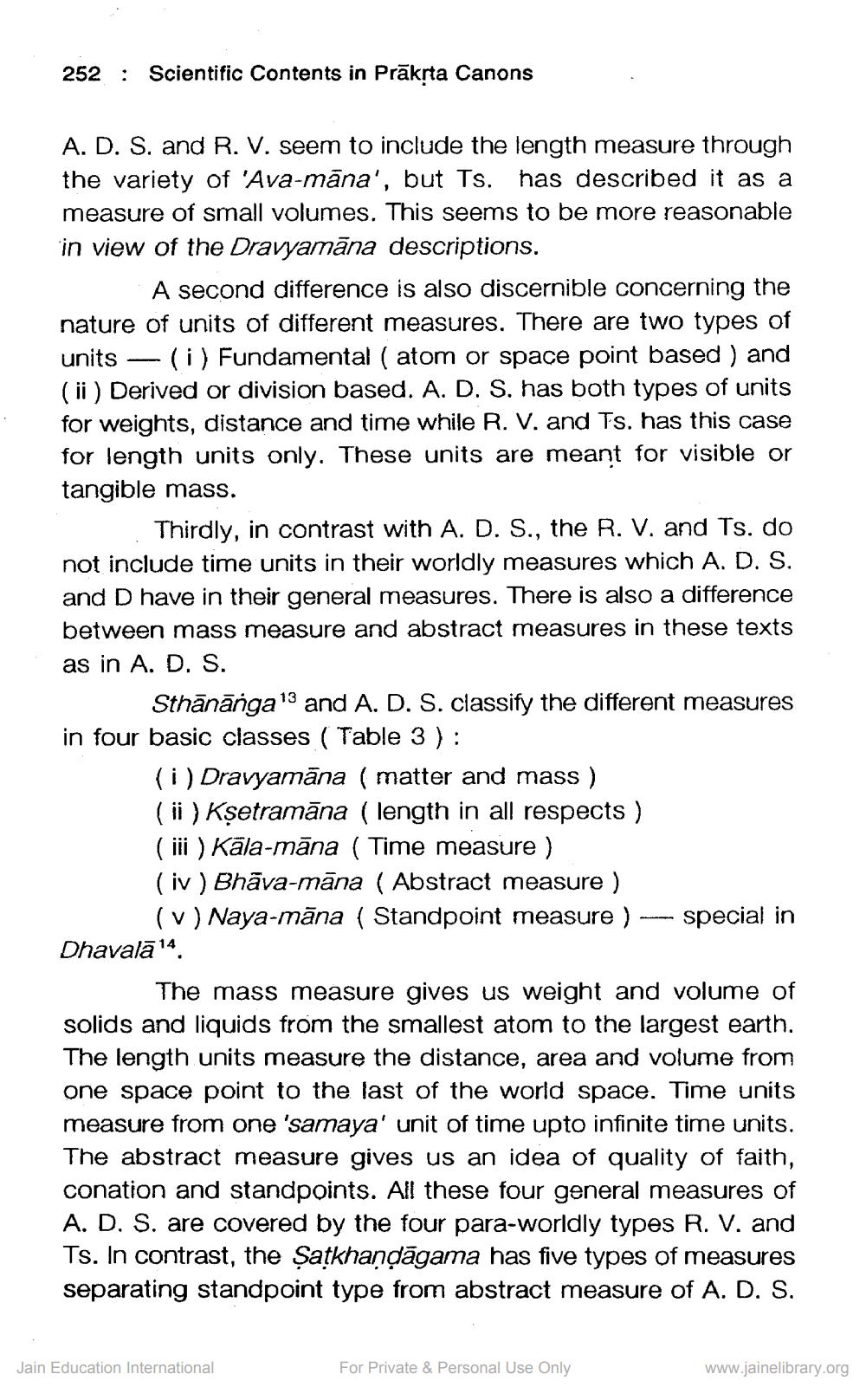________________
252 : Scientific Contents in Prākşta Canons
A. D. S. and R. V. seem to include the length measure through the variety of 'Ava-māna', but Ts. has described it as a measure of small volumes. This seems to be more reasonable in view of the Dravyamāna descriptions.
A second difference is also discernible concerning the nature of units of different measures. There are two types of units — (i) Fundamental ( atom or space point based ) and (ii) Derived or division based. A. D. S. has both types of units for weights, distance and time while R. V. and Ts. has this case for length units only. These units are meant for visible or tangible mass.
Thirdly, in contrast with A. D. S., the R. V. and Ts. do not include time units in their worldly measures which A. D. S. and D have in their general measures. There is also a difference between mass measure and abstract measures in these texts as in A. D. S.
Sthānānga 13 and A. D. S. classify the different measures in four basic classes ( Table 3):
(i) Dravyamāna ( matter and mass ) (ii) Kșetramāna ( length in all respects ) (iii) Kāla-māna ( Time measure ) (iv) Bhāva-māna (Abstract measure )
(v) Naya-māna ( Standpoint measure ) --- special in Dhavalā 14.
The mass measure gives us weight and volume of solids and liquids from the smallest atom to the largest earth. The length units measure the distance, area and volume from one space point to the last of the world space. Time units measure from one 'samaya' unit of time upto infinite time units. The abstract measure gives us an idea of quality of faith, conation and standpoints. All these four general measures of A. D, S. are covered by the four para-worldly types R. V. and Ts. In contrast, the Satkhangāgama has five types of measures separating standpoint type from abstract measure of A. D. S.
Jain Education International
For Private & Personal Use Only
www.jainelibrary.org




